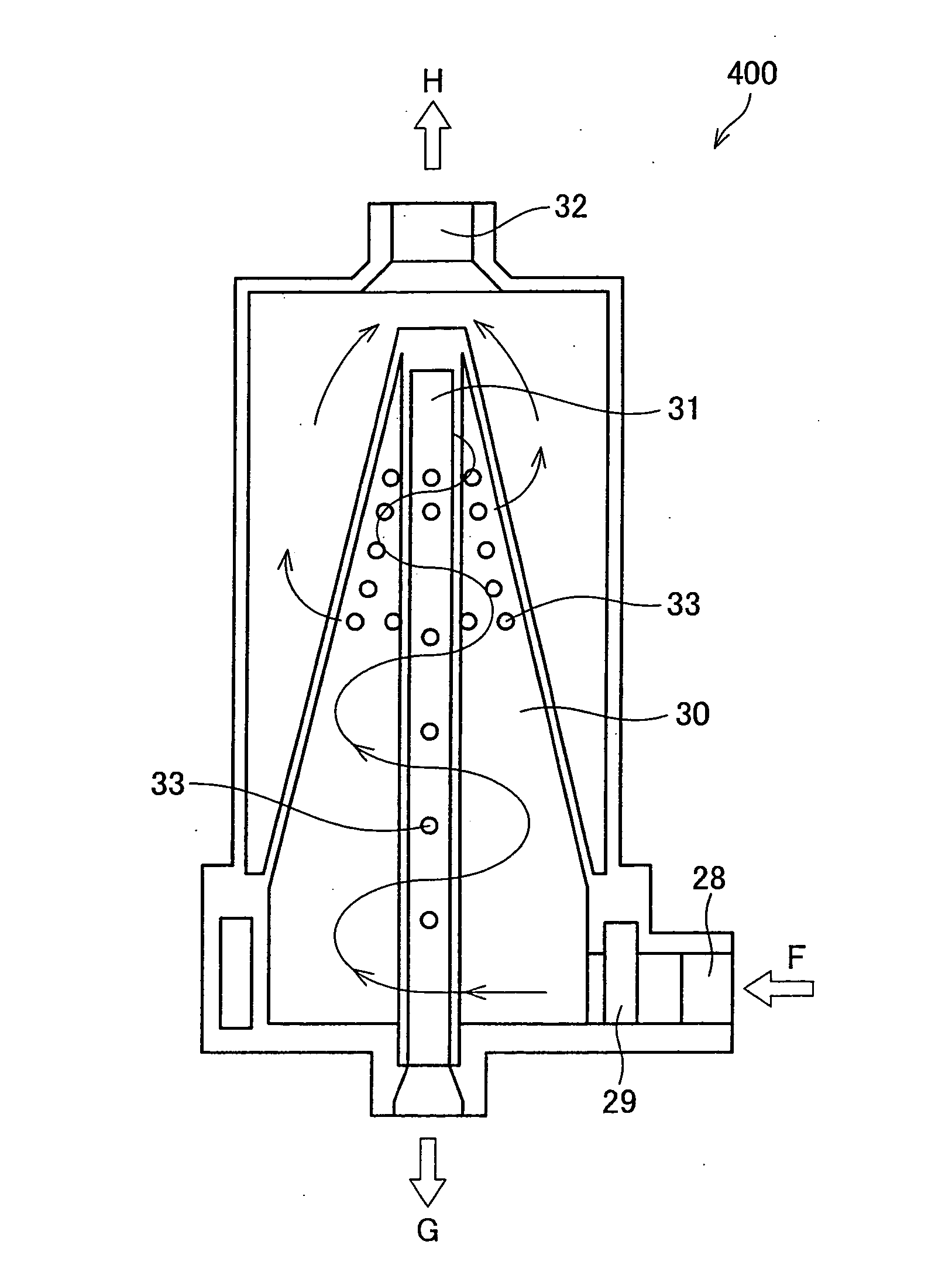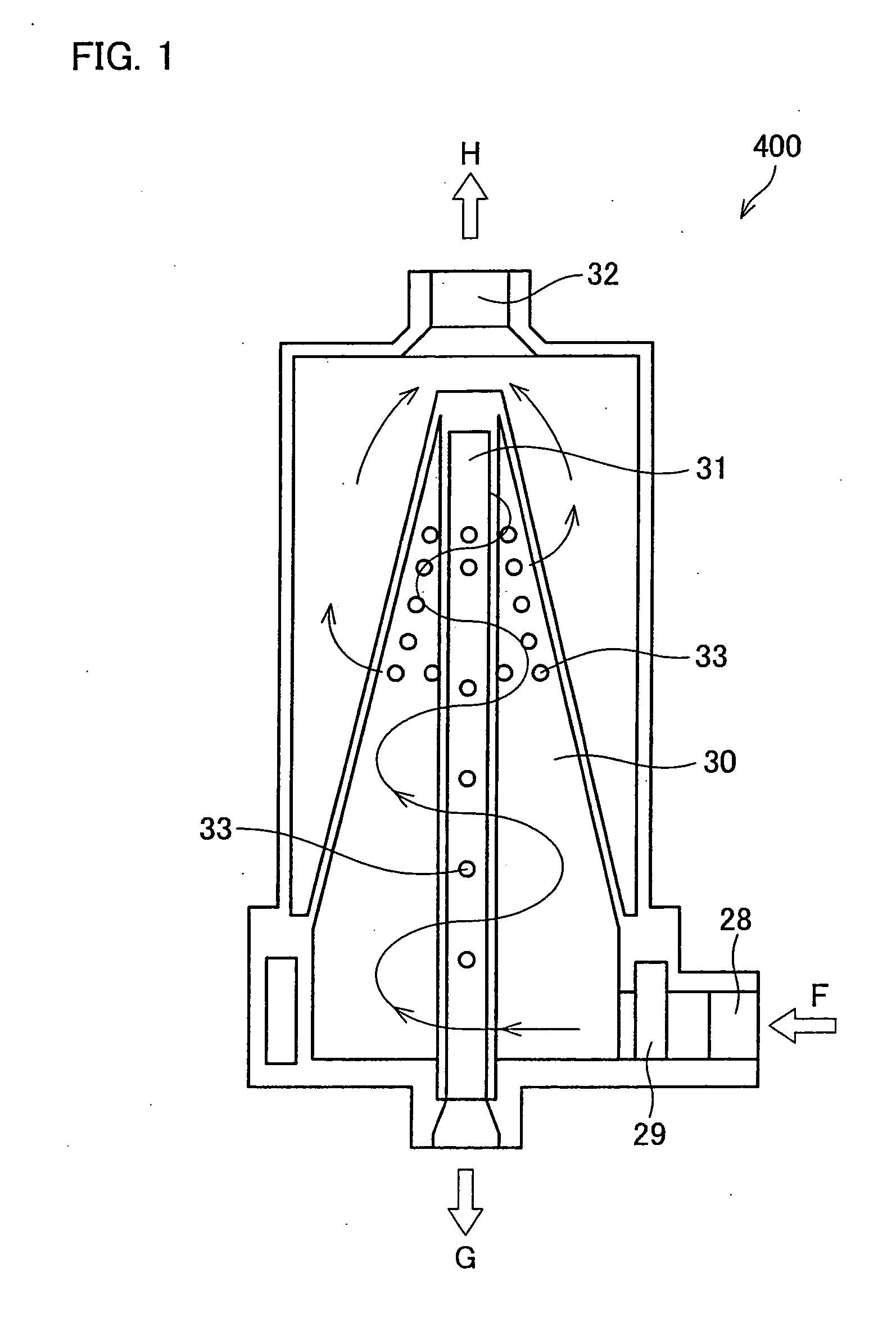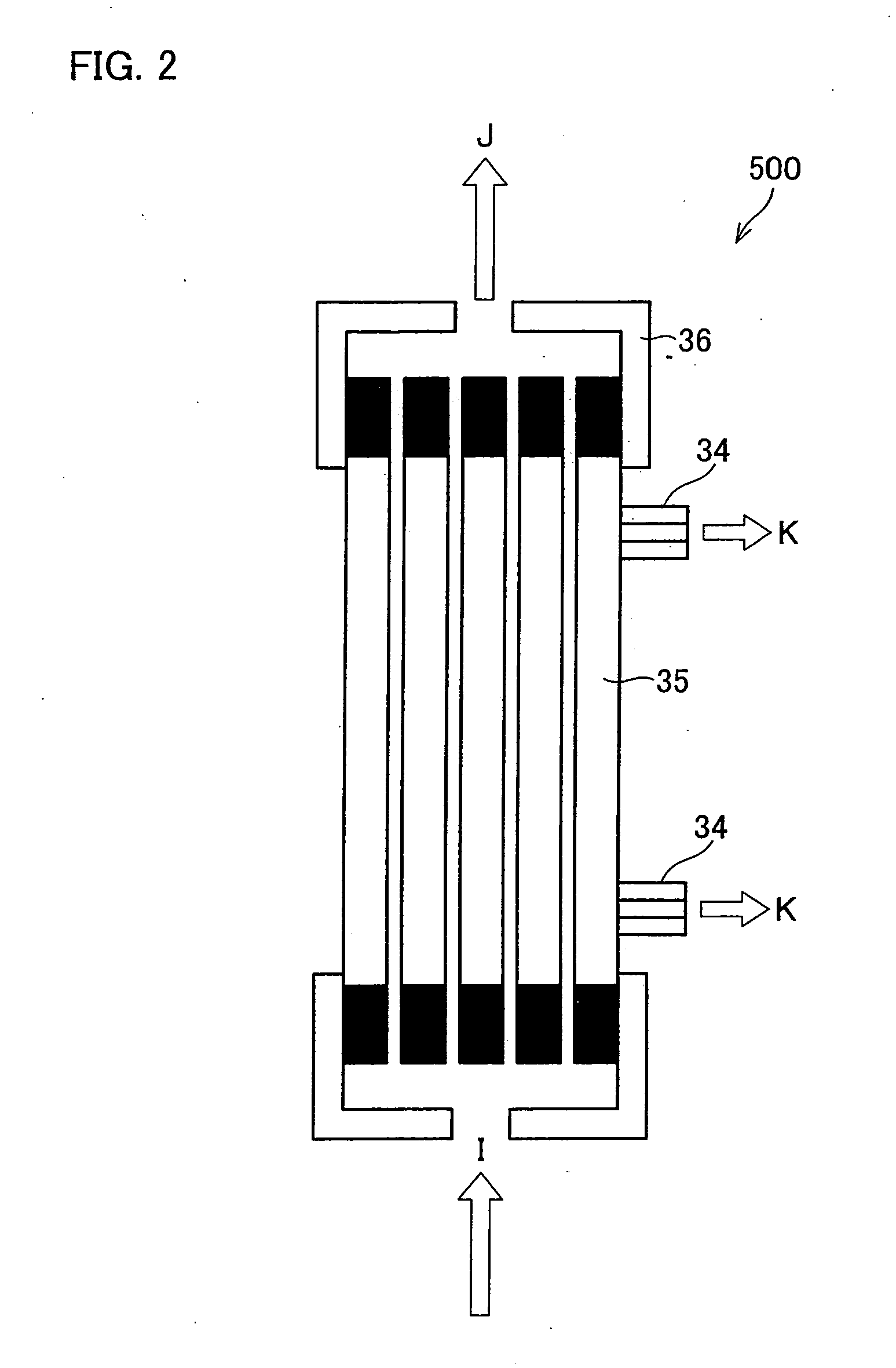Production method of water-absorbent resin, water-absorbent resin, and usage of water-absorbent resin
a technology of water-absorbent resin and production method, which is applied in the direction of metal working apparatus, metal material coating process, separation process, etc., can solve the problems of insufficient prevention of adhesion between hydrous gelatinous polymer particles, odor or other sanitary problems, and decrease work efficiency, so as to improve the display effect, reduce the physicality of the resin, and increase the effect of water-absorbent resin
- Summary
- Abstract
- Description
- Claims
- Application Information
AI Technical Summary
Benefits of technology
Problems solved by technology
Method used
Image
Examples
example 1
[0325] A monomer aqueous solution containing 254.50 g of 37 mass % sodium acrylate aqueous solution, 29.50 g of acrylic acid, 0.747 g of 10 mass % polyethyleneglycol diacrylate (n=9) aqueous solution, 20.26 g of ion exchange water, 6.25 g of 10 mass % polyethyleneglycol (Polyethylene Glycol 6000: product of Kanto Kagaku Co. Ltd.) aqueous solution was prepared. In other words, an ethylene unsaturated monomer aqueous solution including 100 mole % (excluding crosslinking agent) of acrylic acid and sodium acrylate was prepared. Nitrogen was added to the monomer aqueous solution until the dissolved oxygen density becomes 0.1 ppm or lower.
[0326] Then, 1.41 g of 1.0 mass % hydroxycyclohexylphenylketone (Irgacure 184; product of Chiba specialty chemical Co. Ltd.) acrylic acid solution and 1.41 g of 3.0 mass % sodium persulfate aqueous solution were poured into a 30 cm×30 cm tray (product of PFA) in this order, and then a monomer solution was added. The mixture was subjected to polymerizati...
example 2
[0331] A monomer aqueous solution containing 407.2 g of 37 mass % sodium acrylate aqueous solution, 47.2 g of acrylic acid, 1.195 g of 10 mass % polyethyleneglycol diacrylate (n=9) aqueous solution, 40.35 g of ion exchange water, 10.00 g of 10 mass % polyethyleneglycol (Polyethylene Glycol 6000: product of Kanto Kagaku Co. Ltd.) aqueous solution was prepared. In other words, an ethylene unsaturated monomer aqueous solution including 100 mole % (excluding crosslinking agent) of acrylic acid and sodium acrylate was prepared. Nitrogen was added to the monomer aqueous solution until the dissolved oxygen density becomes 0.1 ppm or lower.
[0332] Then, 2.256 g of 1.0 mass % hydroxycyclohexylphenylketone (Irgacure 184; product of Chiba specialty chemical Co. Ltd.) acrylic acid solution and 2.256 g of 3.0 mass % sodium persulfate aqueous solution were poured into a 30 cm×30 cm tray (product of PFA) in this order, and then a monomer solution was added. The mixture was subjected to polymerizat...
example 3
[0336] An aqueous solution was prepared by sufficiently mixing monomers of 43.7 kg of acrylic acid and 286 kg of 37 mass % sodium acrylate aqueous solution, 337 g of polyethyleneglycol diacrylate (n=9), and 86.3 g of ion exchange water. In other words, an ethylene unsaturated monomer aqueous solution including 100 mole % (excluding crosslinking agent) of acrylic acid and sodium acrylate was prepared. A fluorinated adhesion tape containing glass fiber (TGF Glass Cloth; product of Yodogawa Hu-Tech) was bonded onto an endless steal belt, and a belt polymerizer driven at 1.0 m / min was placed on the tape. The belt polymerizer has plural caulds 3.0 cm in height at 30 cm intervals. The aqueous solution was supplied to the belt polymerizer at 1.2 kg / min, so that the aqueous solution became 5 mm high. The aqueous solution was heated on the supplying path so that it becomes 22° C. at the entrance of the belt polymerizer. Further, Nitrogen was added to the monomer aqueous solution on the suppl...
PUM
| Property | Measurement | Unit |
|---|---|---|
| Temperature | aaaaa | aaaaa |
| Temperature | aaaaa | aaaaa |
| Temperature | aaaaa | aaaaa |
Abstract
Description
Claims
Application Information
 Login to View More
Login to View More - R&D
- Intellectual Property
- Life Sciences
- Materials
- Tech Scout
- Unparalleled Data Quality
- Higher Quality Content
- 60% Fewer Hallucinations
Browse by: Latest US Patents, China's latest patents, Technical Efficacy Thesaurus, Application Domain, Technology Topic, Popular Technical Reports.
© 2025 PatSnap. All rights reserved.Legal|Privacy policy|Modern Slavery Act Transparency Statement|Sitemap|About US| Contact US: help@patsnap.com



